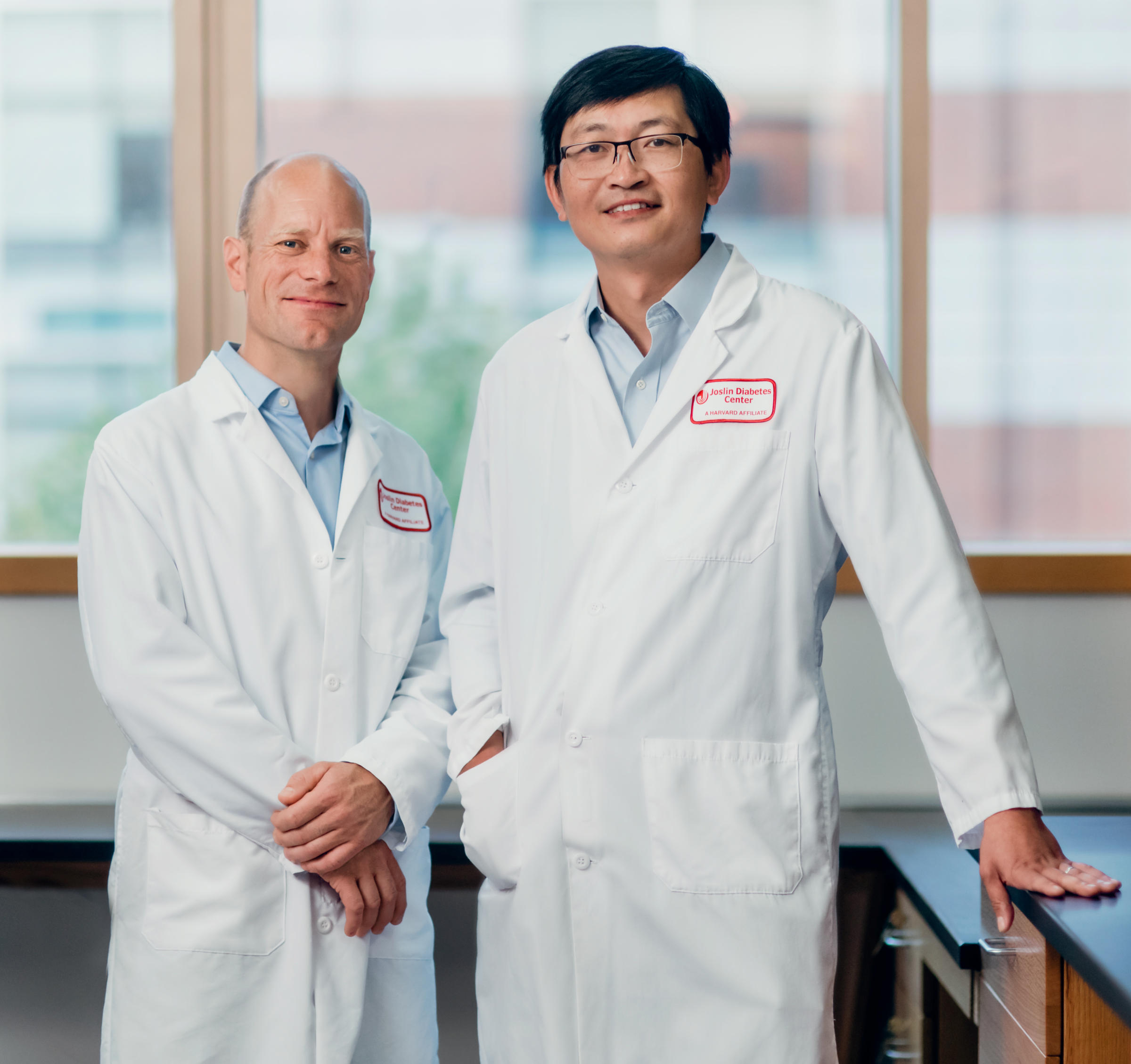Cell Therapy Approaches Moving Along the Pipeline

Beta cell replacement therapies for type 1 diabetes (T1D) have made significant advances in just the past 10 years. We now have insulin-producing beta cells, derived from stem cells, which makes a donor (needed to provide the beta cells) obsolete. We have seen that stem cell-derived precursors can—once implanted in humans—mature into beta cells and release insulin into the blood.
“But what is missing?” you say. Well, once implanted, the beta cells face their cruel opponent: the immune system. Autoimmunity and host immune rejection, without immunosuppressive drugs, would rapidly destroy the newly implanted beta cells. Three approaches, however—two from academia and one from industry, all with JDRF support—are aiming to halt the attack.
JDRF’s role in accelerating therapies—through our research and development pipeline, to people living with T1D—is getting us closer than ever. Read more below.
Academic: Gene Editing to Ward Off the Assault
Hypothesis: There are—perhaps—genetic mutations that would prevent the autoimmune targeting of beta cells, without compromising immunity. That’s what Joslin’s scientists Stephan Kissler, Ph.D., and Peng Yi, Ph.D., and Harvard University’s Douglas A. Melton, Ph.D., wanted to find out. And they were able to demonstrate their hypothesis.

Using a screening approach, the team has identified a gene that makes the pancreatic insulin-producing beta cells vulnerable to autoimmunity: the RNLS gene. To further confirm the screening results, when they treated diabetic animals with a known drug that blocks the function of the RNLS gene, called pargyline (used for high blood pressure until it was discontinued in 2007), they found that the transplanted beta cells were able to survive the autoimmune attack, leading to reversal of diabetes.
“This is the first steps toward identifying and testing drugs that could protect beta cells without the need for immunosuppression drugs,” said Kissler. “This raises the possibility of developing future therapies to prevent and restore blood sugar control in people with type 1 diabetes.”
Beyond this, they envision that using gene therapy to “delete” the RNLS gene could be a safe and effective modification in stem cell-derived beta cells, overcoming the autoimmune process in people undergoing cell transplantation.
Academic to Industry Progression: Local Immune Modulation
One of JDRF research goals is to support academic investigators and projects that can transition into industry settings, where they can bring additional resources and expertise. With JDRF funding, Andrés García, Ph.D., at the Georgia Institute of Technology, and Haval Shirwan, Ph.D., at the University of Louisville (and, now, at the University of Missouri), developed a new engineered hydrogel for local immune modulation that in very elegant preclinical models has shown to protect transplanted pancreatic islets without the need for broad immunosuppression. Two years into testing and validating this technology, they had a partner: iTolerance, which will further develop the therapy toward clinical use.
The therapy works by training the immune system to accept transplanted islets, which are co-transplanted with biomaterials laced with a protein called Fas ligand (FasL) and provide local immune suppression. This technology has the potential to be an “off-the-shelf” treatment, which can be prepared at the time of transplantation by combining the hydrogel with islets for delivery, without the need for encapsulation or broad immunosuppression.
Stay tuned for more information about this pioneering therapy!
Industries Unite to Enter Into New Clinical Trial Phase
You know how I talked about stem cell-derived precursors that can—once implanted in humans—mature into beta cells and produce insulin? That was ViaCyte’s PEC-Direct, which requires immunosuppression. Clinical evaluation of PEC-Encap, which has the potential to be a cell replacement therapy that avoids the need for immunosuppression, has begun with a novel membrane, and ViaCyte has strengthened the agreement with the company W. L. Gore & Associates (Gore), who has developed the new membrane that appears to overcome the body’s response to implantation. Preclinical studies of ViaCyte’s implantation system have shown very positive results, and—should phase I/II clinical studies prove successful—Gore will also manufacture the new membrane for late-stage clinical development and commercial use. Cool!
JDRF has been a significant supporter of ViaCyte. Early in its history, JDRF underwrote development of the proprietary line of precursor cells used in their cell replacement therapies and provided funding for preclinical and clinical studies. This includes the first ever clinical trial to test a stem cell-derived beta cell replacement therapy for T1D, in 2014. In addition, JDRF had a major hand in the creation in 2004 of the California Institute of Regenerative Medicine (CIRM), which is another major funder of the company.
“Advancing research in beta cell replacement is a core pillar of JDRF’s research strategy and we have been a significant supporter of ViaCyte and other promising approaches,” said Esther Latres, Ph.D., Assistant Vice President of Research at JDRF. “This new agreement is an encouraging milestone that shows the research being conducted today is bringing us one step closer to finding cures for type 1 diabetes.”
JDRF celebrates this new line of funding for ViaCyte, which may lead to commercialization of this innovative technology.
Beta cell therapies are one of the pathways to T1D cures—along with immune therapies—and are one of the areas prioritized in JDRF’s updated strategy, as outlined in the white paper, “JDRF: Accelerating Mission and Becoming More Volunteer Powered.” To read more about our beta cell replacement program, go here.